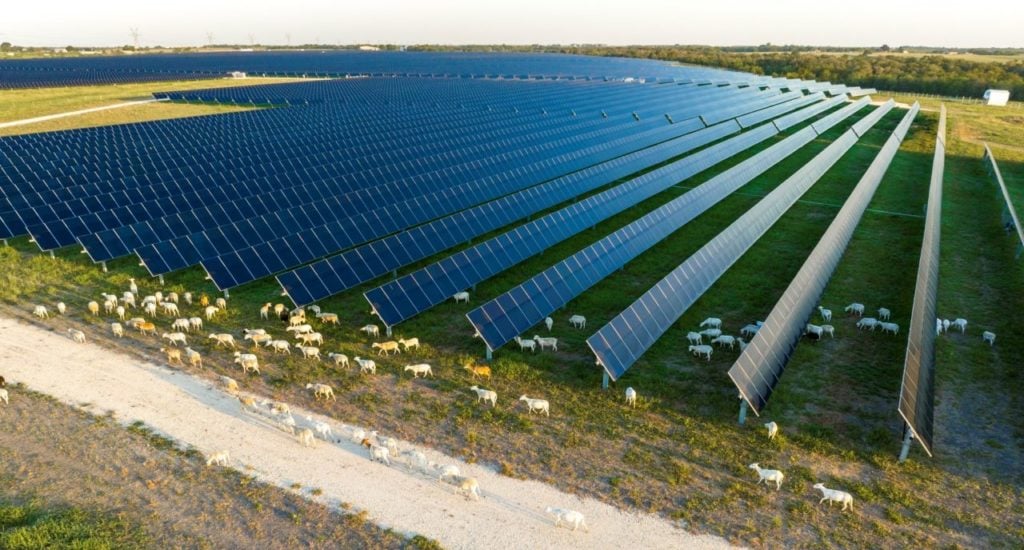
The US Department of Energy (DOE) has announced to set aside US$52 million for financing research and development (R&D) into domestic solar manufacturing and recycling, including a focus on new technologies.
As part of president Biden’s Investing In America Agenda, the DOE has split the financing across 19 projects that will focus on establishing end-of-life and recycling processes for solar panels, domestic manufacturing, and dedicated research and testing projects to develop and improve US-made cell technologies, specifically Cadmium Telluride (CdTe) and Perovskite solar cells.
Unlock unlimited access for 12 whole months of distinctive global analysis
Photovoltaics International is now included.
- Regular insight and analysis of the industry’s biggest developments
- In-depth interviews with the industry’s leading figures
- Unlimited digital access to the PV Tech Power journal catalogue
- Unlimited digital access to the Photovoltaics International journal catalogue
- Access to more than 1,000 technical papers
- Discounts on Solar Media’s portfolio of events, in-person and virtual
Manufacturing and cell tech
On the manufacturing front, the largest grants have been made to First Solar and Toledo Solar, both of which will run CdTe development projects for innovative applications from their Ohio bases.
This week, PV Tech head of research Finlay Colville published a piece on the module technologies the US can expect to dominate in 2023. CdTe panels (mostly from First Solar) will be one of the most dominant.
First Solar received US$7.3 million to develop a cadmium telluride (CdTe)/silicon tandem module for the residential rooftop market that the DOE said will be more efficient than standalone technology modules on the market today. This comes as the US residential rooftop market is set to ‘boom’ as consumers look to benefit from incentives and protect themselves from volatile energy markets.
US$8.8 million was given to Toledo Solar to develop semitransparent CdTe thin film technology for application to windows.
Seven other projects, mostly focused on diverse and innovative technologies, were given funding for research into de-risking manufacturing processes and new tech.
The largest of these were Lightspeed Energy’s (US$1.6 million) project to mitigate wind and wave damage for floating PV sites; Vitro Flat Glass’s (US$1.6 million) research into developing a high-performance substrate to improve the power output of CdTe modules; and Mirai Solar’s (US$1.4 million) development of a foldable PV solar screen with variable shading and output power for controlled environment greenhouses.
Researchers at the Massachusetts Institute of Technology (MIT) and the University of Colorado Boulder were also given a collective US$18 million to research development into perovskite cells and modules – a hot topic that holds great promise for power efficiency but has yet to be effectively scaled due to the metal’s instability and intolerance of light, air and moisture.
MIT researchers will focus on “commercially relevant” tandem perovskite/silicon cells, with a view to creating feasible perovskite modules and manufacturing methods. The researchers at Boulder will focus on developing cost-effective, maximally efficient and durable tandem cells in partnership with the National Renewable Energy Laboratory (NREL) and three perovskite companies.
A new world record efficiency for a test-size perovskite cell was certified in Saudi Arabia earlier this week.
Recycling
Under the Bipartisan Infrastructure Law (BIL) – in tandem with the DOE’s Photovoltaics Research and Development funding programme (PVRD) – eight projects were awarded funding to focus on the cost-efficiency and scalability of PV module recycling and recovery.
PV Tech Premium discussed the scale of the issue facing the PV industry in terms of module waste and recycling concerns last week, with one industry player forecasting that by the end of this decade there will be 10 billion solar panels deployed globally which will have to ultimately be dealt with.
The awarded projects covered both end-of-life recycling processes and manufacturing-stage innovations designed to make panels more readily and affordably recyclable at the end of their lifespan.
The Georgia Institute of Technology received US$1.5 million to research the replacement of silver – the most valuable material in a solar panel – with copper and aluminium-based pastes to reduce the cost of a panel and, presumably, make recycling more economically viable.
Dedicated recycling firm Solarcycle – who spoke to PV Tech Premium last week – also received US$1.5 million to develop their high-value recycling process at their California headquarters, which focuses on extracting silver and other materials at high purity levels.
The DOE said that the current economics for recycling solar panels do not add up, as disposing of panels in landfill is currently significantly cheaper than recycling them. The next issue of our journal PV Tech Power will feature a deep dive into recycling and end-of-life concerns.
This is the first meaningful US federal action on PV module recycling. Some states have discussed implementing policies or incentives, but scant framework currently exists.
Further finance announcements
The DOE also announced a further US$30 million – on top of the US$52 million for PV R&D – to support the US’ grid. A report from earlier this month found that 1TW of solar PV is currently waiting in US interconnection queues, unable to secure grid access.
The funding comes under the DOE’s investment programme that focuses on inverter-based integration into the US grid and diversifying the country’s generation sources in collaboration with its Solar Energy Technologies Office.
On the same day as these announcements, the DOE announced a US$10 million Community Power Accelerator Prize competition, which will allow 25 selected developers to submit to be awarded a portion of the financing to develop community solar projects.
The US’ community solar market has been going from strength to strength in recent months; a February report predicted that the sector will double in the next five years. However, the fall of Silicon Valley Bank last month raised some concerns about financing and viability for the significant portion of community solar projects that were tied to the bank.







